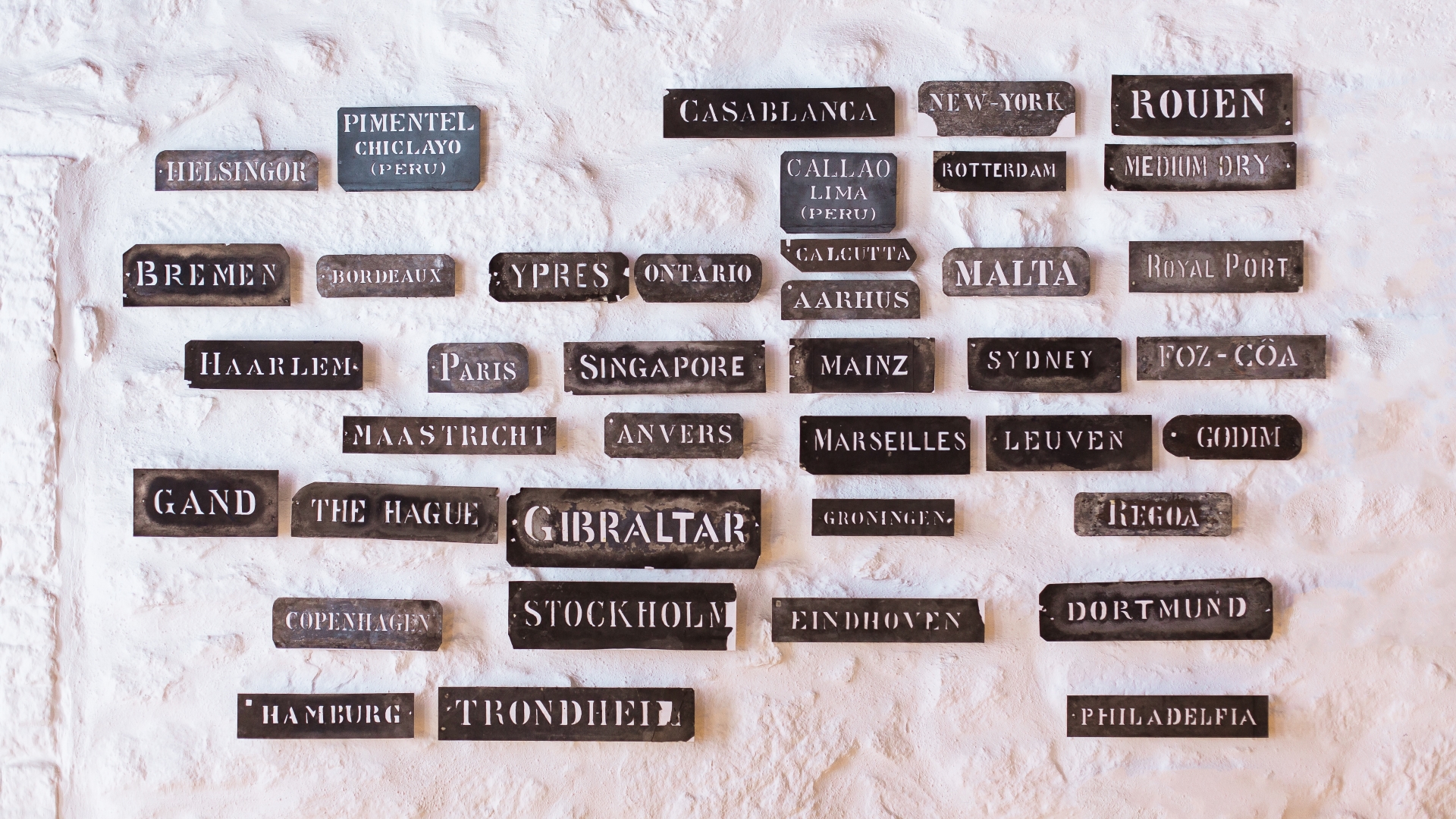10 Tips For Choosing a Name for Your Online Fashion Course

In this post, I will help you by explaining the key things you should consider when choosing a name for your course. Giving it ample consideration is almost as important as the consideration parents give their children's names. After all, a name says a lot one way or the other.
"So what did you call your children, Cheryl?" I hear you saying.
I've named all my four children with what I think are unusual names. Or at least they were unusual compared to the names of other children in our community at the time. OK, you're keen to know their names, I can tell.
They are Saskia, Scout, Stowe, and Tolmeia. Each has a specific reason behind the choice and an origin that is relevant. I'll explain it.
I chose Saskia after being inspired by Dutch artist Rembrandt who had a wife called Saskia van Uylenburgh. I have a love of art history, and at the time of my daughter's birth, my husband worked for a Dutch company and made frequent trips to the Netherlands.
Scout was the name of a character in the novel "To Killing a Mocking Bird". Author Harper Lee writes about civil rights and racism in the segregated Southern United States of the 1930s. The story is told through Scout Finch's eyes, whose father, Atticus Finch, an attorney, hopelessly strives to prove the innocence of a black man unjustly accused of rape. Somehow the name Scout struck a note for me, and although in the book it is a girl's name, I named my firstborn son with it.
Stowe was my second son, and his name was inspired by Stowe, the town in Vermont, USA, a place which my mother spoke fondly of when she was alive.
Tolmeia was inspired by a plant I had in my first house. The plant was called a Piggy Back plant whose Latin name is Tolmiea menziesii. We changed the spelling slightly, swapping the "e" and "i" around.
We chose these names because we wanted our children to stand out and be noticed. They are individuals and wanted an individual name to celebrate their uniqueness.
So now you know.
But what has this to do with choosing a course name?

Name Your Course Creatively
Names always have a meaning, and a connection and your course name should communicate several things.
- What the topic is about.
- What it's promising.
- What the benefits are of taking the course.
This is a tall order, but with some creativity, you should be able to get all three in your title.
Your course title also needs to be different from any similar courses and clear of any trademark or registration mark infringements.
Hmmm. Some work to do then. Here's what I suggest you do to name your course.
1. Brainstorm the Topic
Step 1 is to brainstorm words that are relevant to the topic. Allow yourself 15 minutes to get as many words and themes out of your head as relevant to the course subject. Use words that relate to the level you are teaching at. Write down words that include the benefits the student will get. All you are trying to do is get a range of words that you can pick from during a later step.
2. Use a Thesaurus
Now expand upon your list of words using an online thesaurus. This is a quick way to get some alternatives. Write these down.
3. Use an Online Name or Slogan Generator
Next, use an online name generation tool such as those you can find recommended here and here. Write down 10 - 15 suggestions that these tools generate for further ideas.
4. Write Down 5 Suggestions and then Rate Them
After you have generated a pool of ideas and words that may combine to give you a suitable course name, propose five and then rate them against the following criteria.
- Is it as short as possible?
- Is it memorable?
- Does it offer the benefits?
- Is it different from other courses containing similar content?
- Can you register the domain name, especially .com?
- Does it infringe on any trademarks or registered names? Search online.
- Do you like the sound of it?
- Is it catchy?
- Is it clear?
Rate each of the titles your propose and see how many of these points each title has. Then choose the one that you most prefer and has the highest rating.
An Example
Let's take a new course being launched on The Fashion Student Hub by Marianne Centner called "How to Master Adobe Illustrator to Create Professional Shoe Designs."
Let's consider this against our checklist.
What is the topic? Creating professional shoe designs using Adobe Illustrator.
What it's promising? That you'll be able to master the software, create professional shoe designs.
What are the benefits of taking the course? You'll be able to design professional output.
Is it as short as possible? We could make this shorter, so it becomes "Master Adobe Illustrator to Create Professional Shoe Designs", but there is no need unless we are stuck for the number of characters we can use in our course hosting platform.
Is it memorable? No. We would have to drop words which would affect the other criteria. See what happens when we turn it into "Pro Shoe Designs." We lose the Adobe Illustrator component, so now I'm not sure as a student if this is for me.
Is it catchy? Well, Pro Shoe Designs is more catchy? How about these as alternative suggestions?
- Shoe Design Excellency
- The Fine Art of Shoe Design
- Forget Mediocre Shoe Designs
- Slick Shoe Designs
As you can see, we can instantly play around with titles and change the course's feel.
Is it clear? Certainly, "How to Master Adobe Illustrator to Create Professional Shoe Designs" is. Still, other options on this page don't provide a clearly defined course title considering the course's content.
5. The Alternative Approach
We can take the alternative approach to have a shorter, more catchy title for the name and then have a longer, more descriptive course subtitle that gives the prospective student more information about the course.
For example:
Title: Slick Shoe Designs
Sub-title: How to Master Adobe Illustrator to Create Professional Shoe Designs

6. Include Power Enhancing Words
It would help if you also considered using what I call power-enhancing words in your title. Don't overdo these. used correctly, and they will enhance the value your course is suggesting it offers. These words include:
- Complete
- Awesome
- Amazing
- Ultimate
7. Use Naming Unity for a Series of Courses
If you’re offering a course series or several related courses, then use a common name format. And if the courses need to be completed in a particular order, ensure to include that information with proper numbering.
For example:
- Fashion Design Research 101: Basic Principles of Research
- Fashion Design Research 102: The 7 Research Themes to Use
- Fashion Design Research 103: Researching Military and Workwear
8. Use two-part Names
This approach is similar to the Alternative Method mentioned above. Still, whereas that is to be used where you have a subtitle option, in this case, you are combining everything into one title. Catchy name and description.
For example:
- Finance for Fashion: Master Your Finances in 30 days
- Freelancing 101. Turn Your Pattern Cutting Skills into Cash
- Work Remotely. Thrive in a Fashion Tutoring Job From Home
9. Be Clear Rather than Clever
It's great if you can be clear and clever, but clear, always trumps clever.
10. Final Task
Depending on the type of online course you are creating and the course name's significance on your branding, you may wish to consider registering the name to protect its use.
Two sites to consider are:
If you haven't signed up for our free training explaining how you can earn extra income by selling your fashion expertise online, click here to receive four FREE training videos.
Join over 1 million people making a living with online courses!
Sign up to get more information about how to teach online, how to pivot your lectures to include online sessions and how to coach students online using the latest technologies.
Get our free training today.
We hate SPAM. We will never sell your information, for any reason.



